Biodiversity enhancing planting scheme
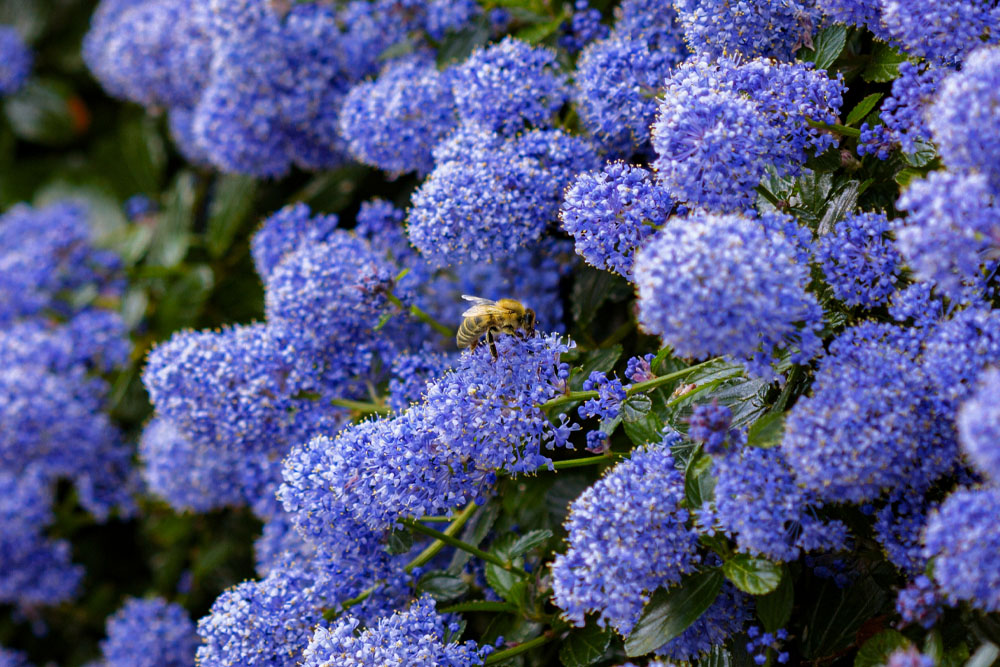
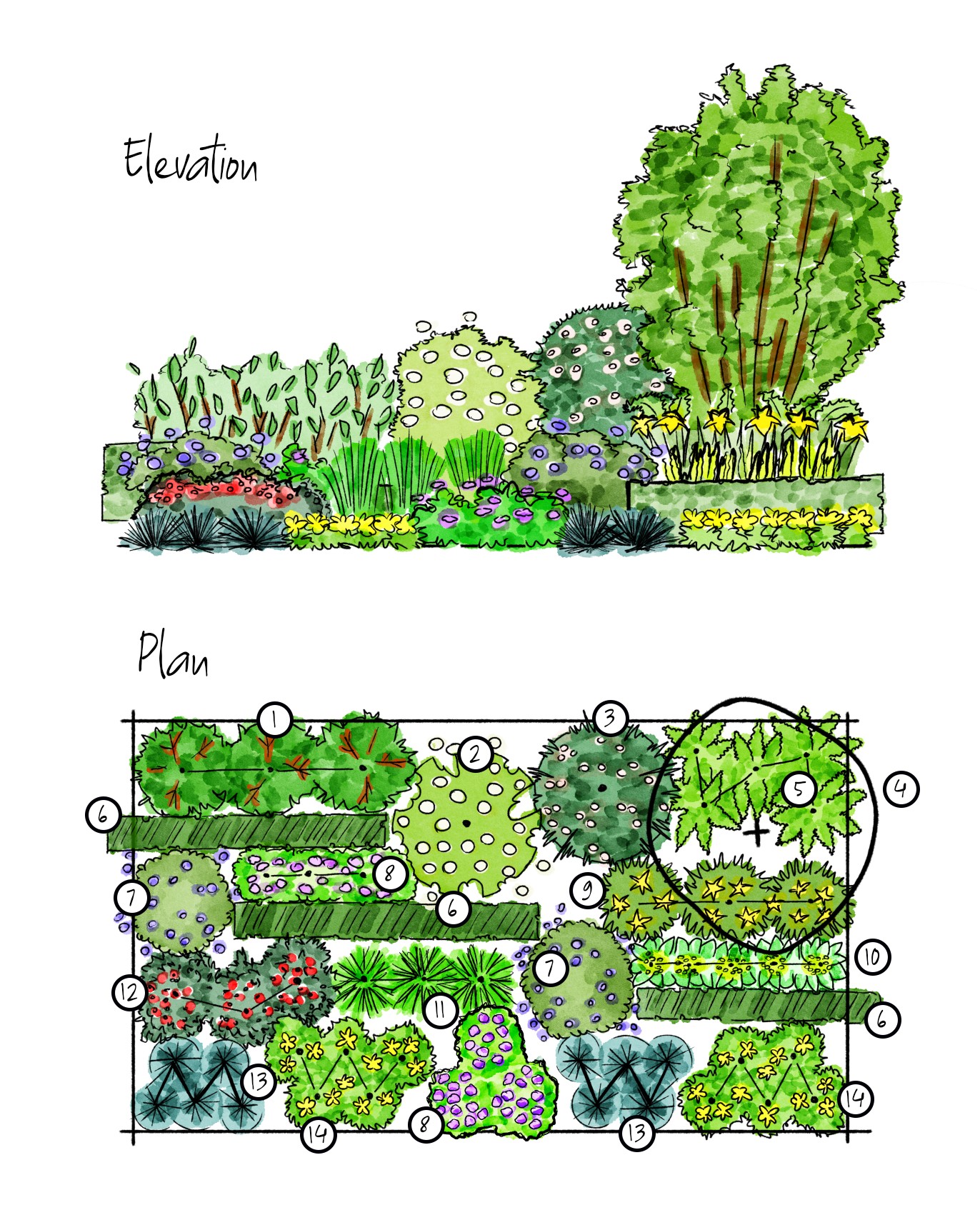
Planting scheme to optimise biodiversity
Biodiversity refers to the variety of microorganisms, plants and animals in an ecosystem and how the species interact which each other. It is important that we maintain healthy ecosystems because a reduction in biodiversity can result in the loss of habitats and living organisms which we rely on to provide us with the air we breathe and the food we eat.
Humans negatively impact biodiversity through pollution, change of land use, exploitation of natural resources and introduction of invasive species. In the UK, wildlife has declined by 19% since the 1970s, despite the introduction of legislation to protect it. New Biodiversity Net Gain (BNG) regulations became mandatory in England on 12th February 2024 and require developers to leave the natural habitat in a better state than before.
Fortunately, every garden and green space offers an opportunity to encourage wildlife and increase biodiversity. Plants are the foundation of a garden’s ecosystem and encourage invertebrates, amphibians, birds, and mammals to thrive. There are several strategies that can be applied to optimise biodiversity.
A variety of plants that appeal to pollinators are vital for enhancing biodiversity as they provide food sources throughout the year. By attracting and sustaining pollinators, flowering plants ensure that their successful pollination results in the production of fruits and seeds that sustain many animal species, including humans. By planting native species we can retain the regional character of the natural environment and support indigenous wildlife throughout the year.
Trees and shrubs provide vital shelter for wildlife and support to climbing plants, like ivy. They often offer nectar and fruit to animals. Leaving grass to grow long creates a haven for insects which in turn provide a source of food to amphibians, reptiles, and mammals. Allowing leaf litter and dead wood to collect on the ground will offer foraging, shelter, and hibernation opportunities for animals and ideal conditions for fungi.
Adding bug hotels provide homes for a variety of insects and compost heaps encourage decomposers like worms, bacteria, and fungi. Installing bird feeders, nest boxes, and bat boxes will encourage birds and bats into the area which in turn will provide natural control of insects. A small pond can support a wide variety of fish, amphibians, beetles, and flies. Birds and mammals enjoy water, not just to drink, but to clean themselves.
Plants that we traditionally see as weeds, like dandelions, nettles, and brambles, provide essential sources of pollen, nectar, seeds, and fruit. It is beneficial to leave some areas of the garden untended and to avoid use of pesticides and herbicides – biological pest control methods can be utilised instead.
Connecting the green space with the surrounding environment, via wooded areas, hedges, ponds, or simply gaps in fences, provides wildlife with corridors to move freely. By creating a wildlife-friendly environment, we can enhance the ecological value of a garden and enjoy a space rich in biodiversity, where wildlife thrives amongst the plants.
1. Cornus sanguinea, 2. Viburnum opulus, 3. Viburnum tinus ‘Eve Price’, 4. Corylus avellana, 5. Polystichum setiferum, 6. Euonymus japonicus ‘Microphyllus’, 7. Ceanothus thyrsiflorus var. repens, 8. Geranium x johnsonii ‘Johnson’s Blue’, 9. Iris pseudacorus, 10. Tellima grandiflora, 11. Libertia grandiflora, 12. Ruscus aculeatus, 13. Festuca glauca, 14. Waldsteinia ternata.
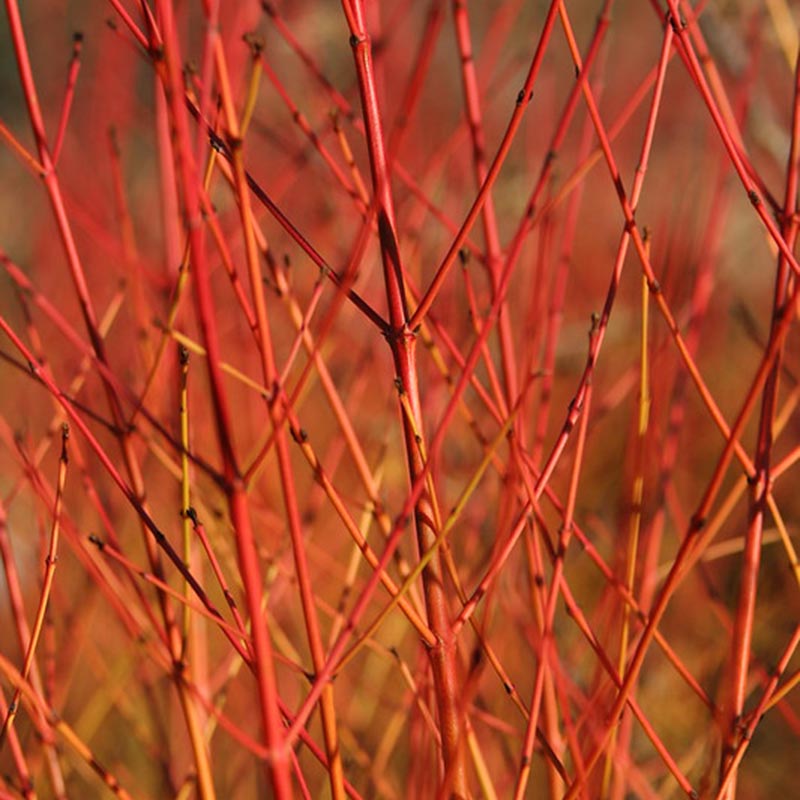
①
Cornus sanguinea
An upright native shrub with ovate, green leaves that mature to red in autumn, on red-green stems. Blooms clusters of white flowers in spring to summer, and black berries follow in autumn. The brightest winter bark will develop in full sun.
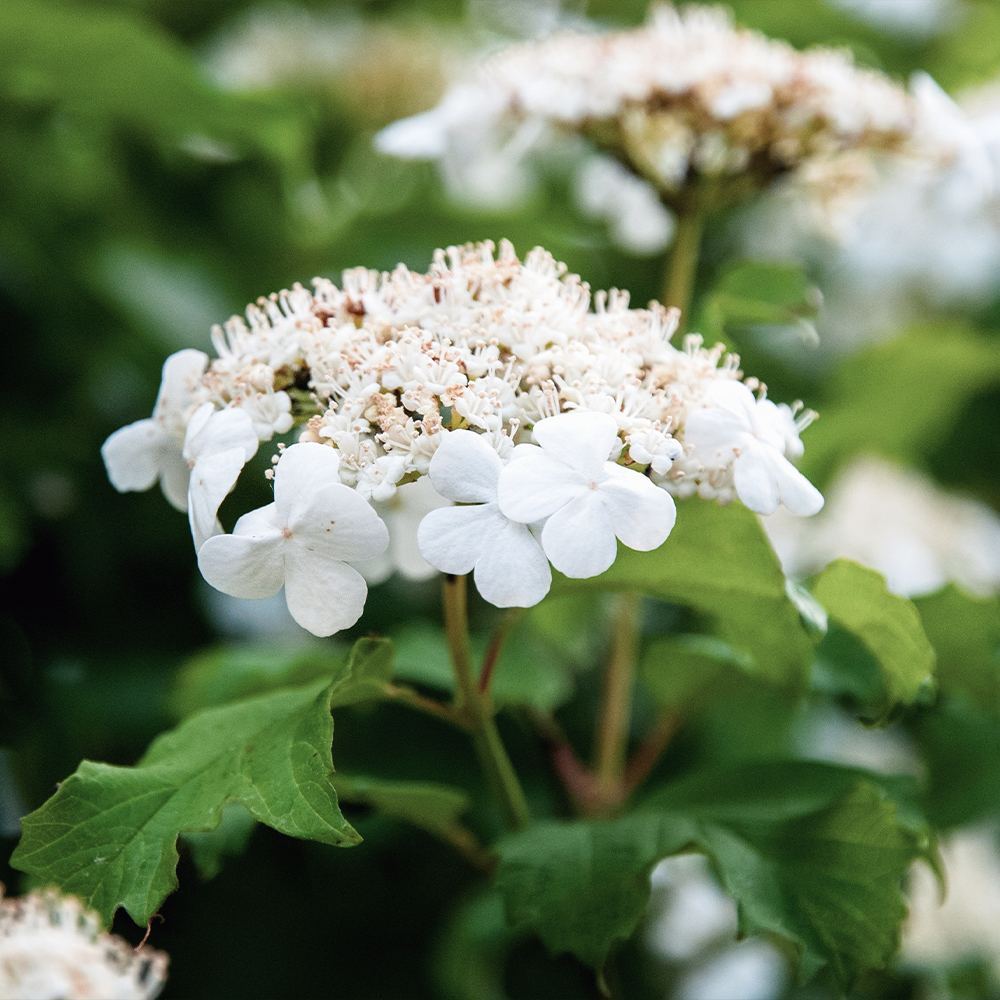
②
Viburnum opulus
A vigorous native shrub with maple-like leaves that provide autumn colour. Snowball-like clusters of white, or green tinted, flowers appear in late spring and are followed by red berries. A low maintenance shrub that will require very little pruning
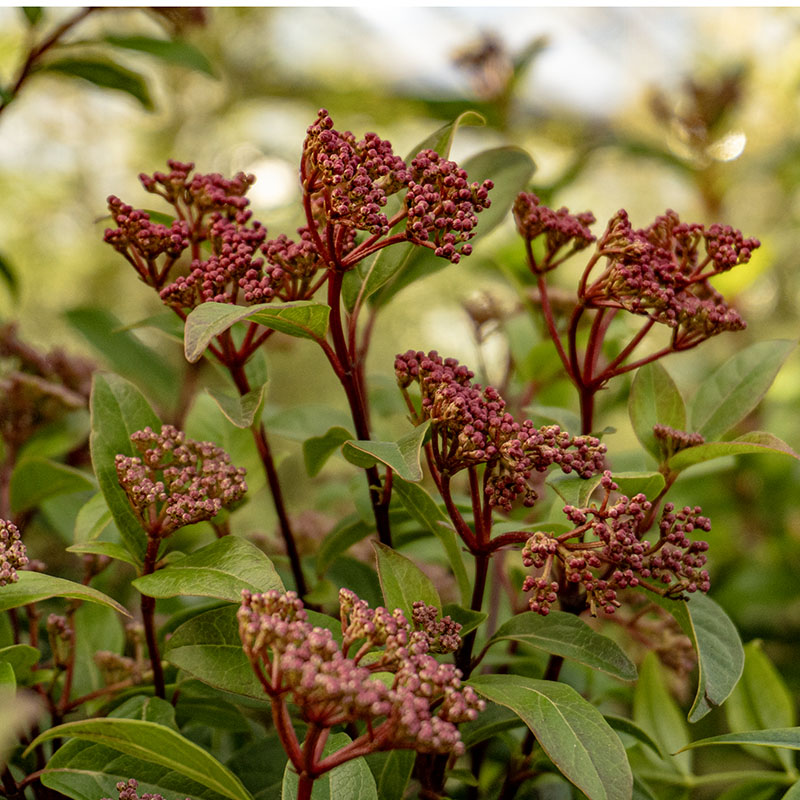
③
Viburnum tinus ‘Eve Price’
More compact than Viburnum tinus, this shrub has clusters of pink buds that open into white flowers, followed by blue-black spring berries. Good for screening and hedging.
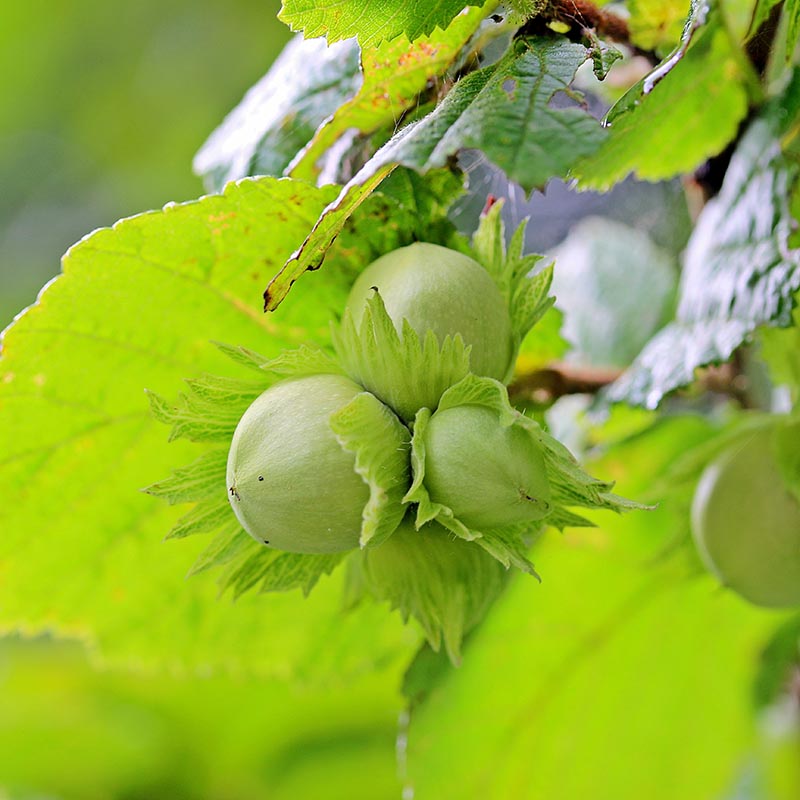
④
Corylus avellana
A large native shrub with green, rounded foliage that transitions to yellow in autumn. Blooms yellow catkins in spring and edible nuts in autumn.
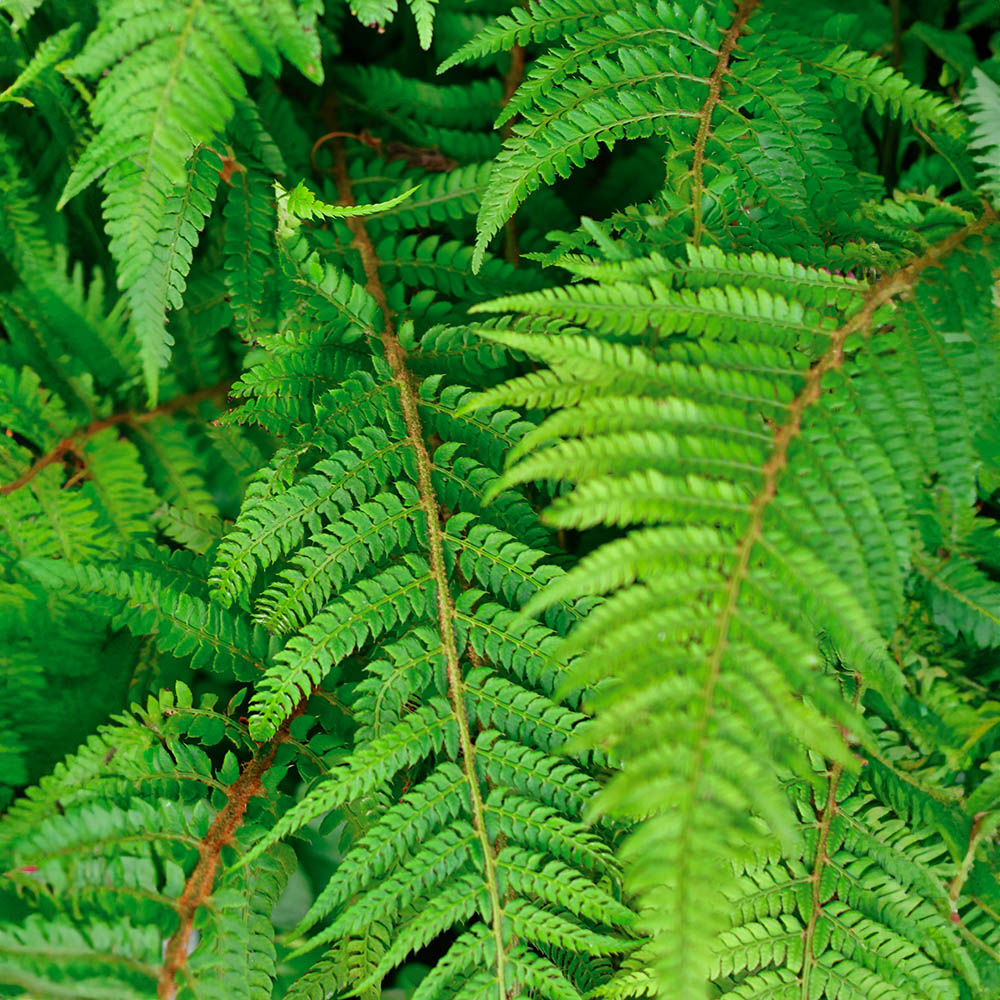
⑤
Polystichum setiferum
A large, native, evergreen, tufted fern with dark green, softly arching fronds and orange-brown stalks. The fronds emerge upright in habit until they unfurl and open. Thrives in shady spots under deciduous trees.
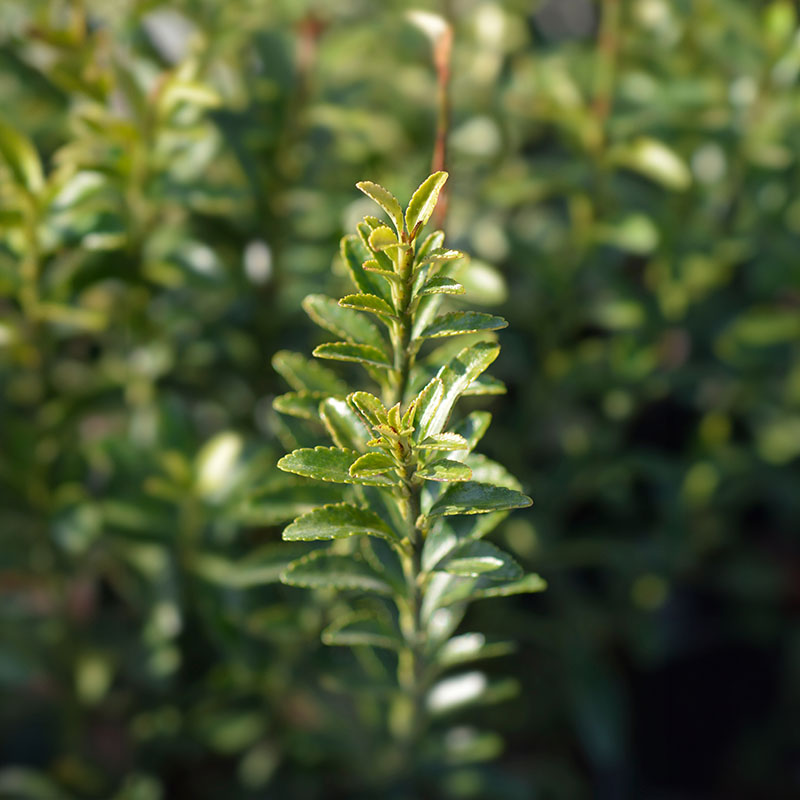
⑥
Euonymus japonicus ‘Microphyllus’
A slow-growing evergreen shrub with a dense habit and glossy, deep green leaves. Ideal for a low hedge and a fantastic alternative to Buxus sempervirens.
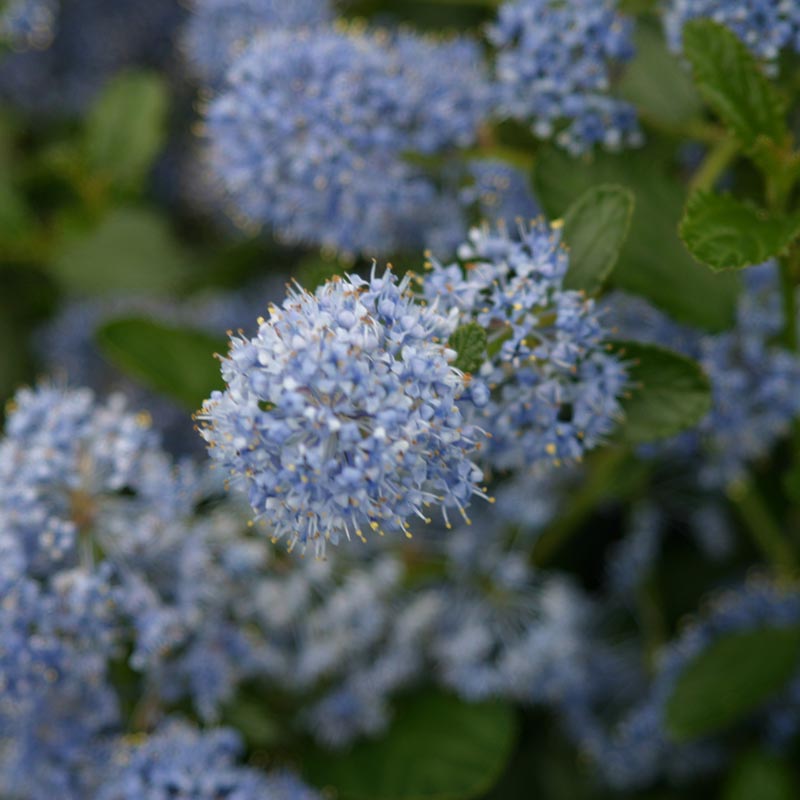
⑦
Ceanothus thyrsiflorus var. repens
A low-growing, mound-forming shrub with fluffy, light blue flowers in spring and early summer. Great for positioning in the front of sunny borders or against a sheltered wall, where it will grow much taller. One of the hardiest Ceanothus and its nectar-rich flowers are loved by pollinators.
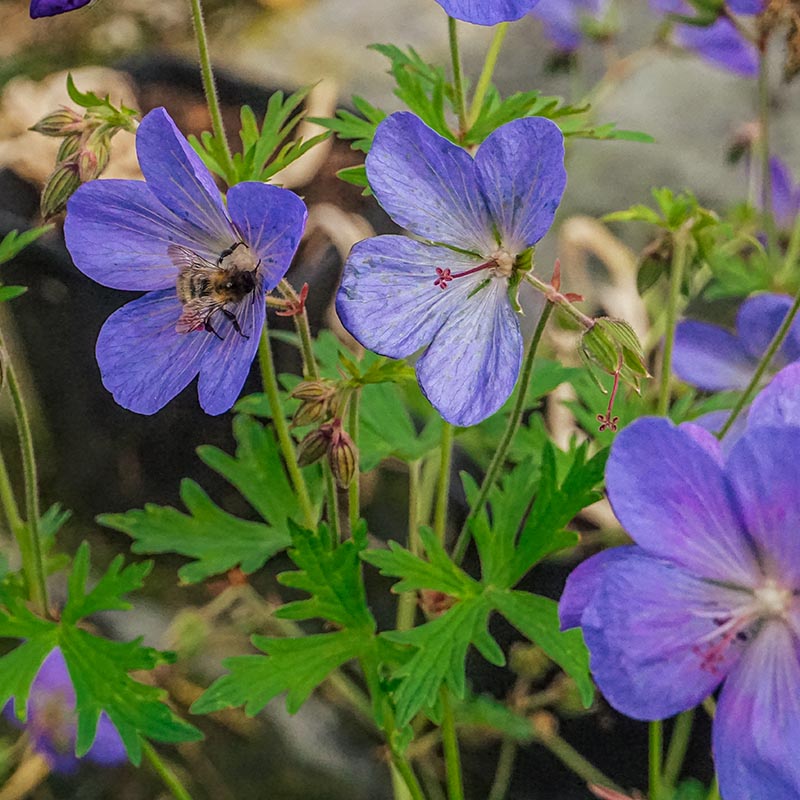
⑧
Geranium x johnsonii ‘Johnson’s Blue’
A clump-forming perennial with masses of dark-veined, lavender-blue flowers that become grey in colour as they mature, above deeply lobed, mid-green leaves. Looks great when allowed to spread in the front of borders, as it forms a dense carpet of foliage. Loved by butterflies.
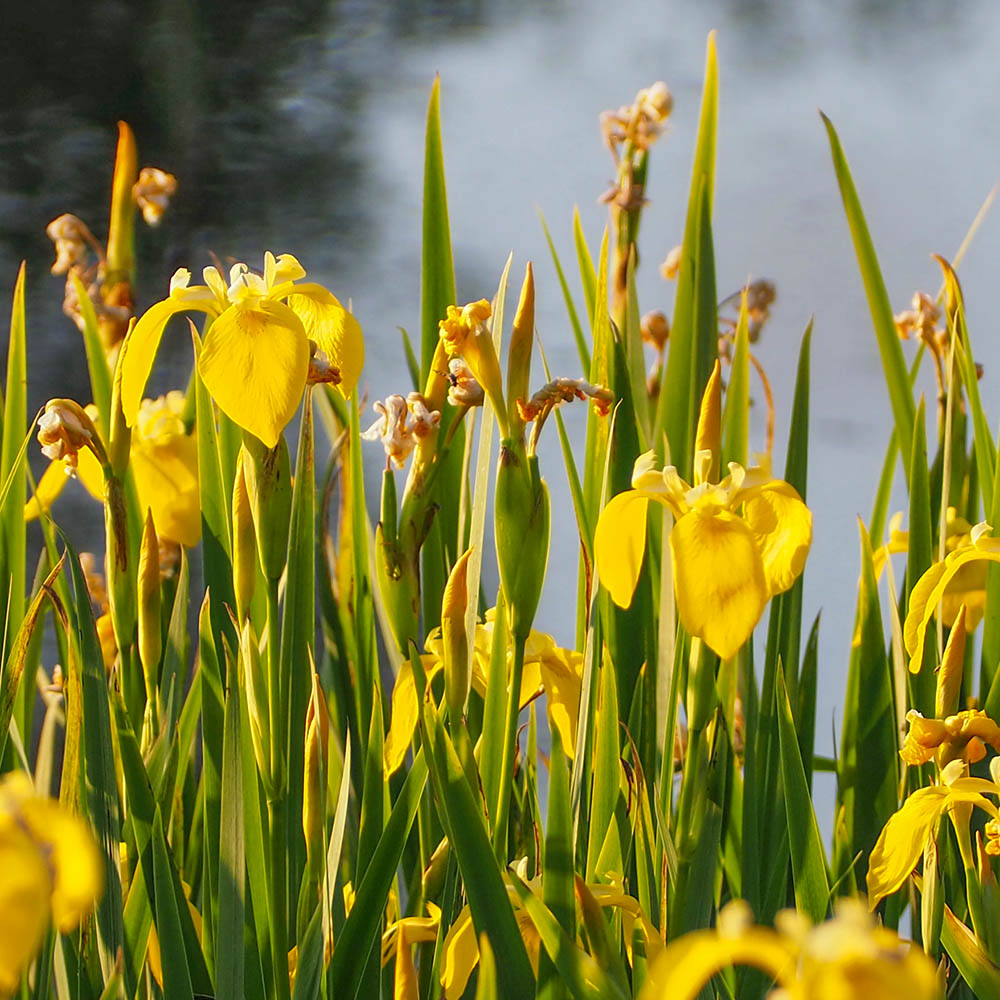
⑨
Iris pseudacorus
A vigorous native perennial that forms clumps of green foliage, alongside bright yellow flowers. Looks fantastic when planted within a wildlife garden.
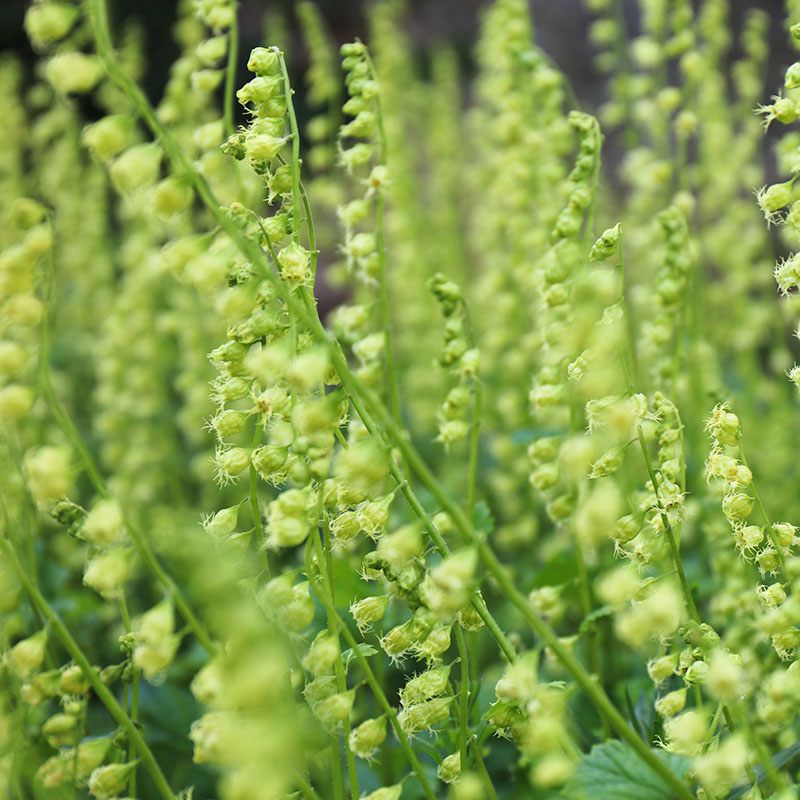
⑩
Tellima grandiflora
A good groundcover plant that has rosettes of hairy, scalloped green leaves. Tall racemes of cream flowers that fade to pink. Looks lovely combined with hostas and ferns.
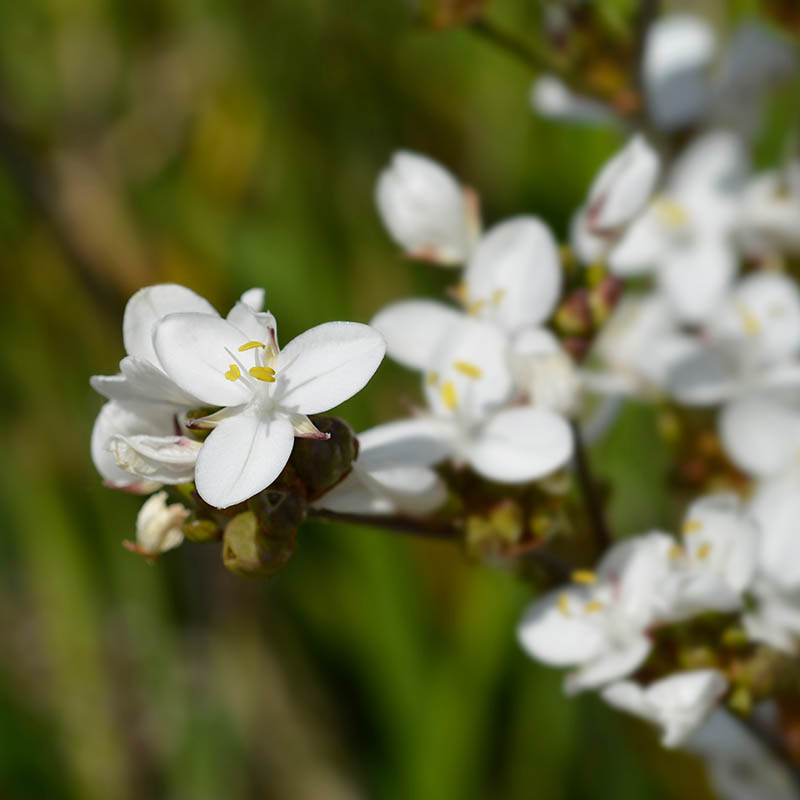
⑪
Libertia grandiflora
A clump-forming grass with narrow, sword-like, dark green leaves and upright stems of white, bowl-shaped flowers. Fantastic in a gravel garden or in the front of a sunny border.

⑫
Ruscus aculeatus
A bushy, rhizomatous native sub-shrub with glossy, dark green, spiny foliage. It flowers in spring and female plants produce red berries in summer and autumn.
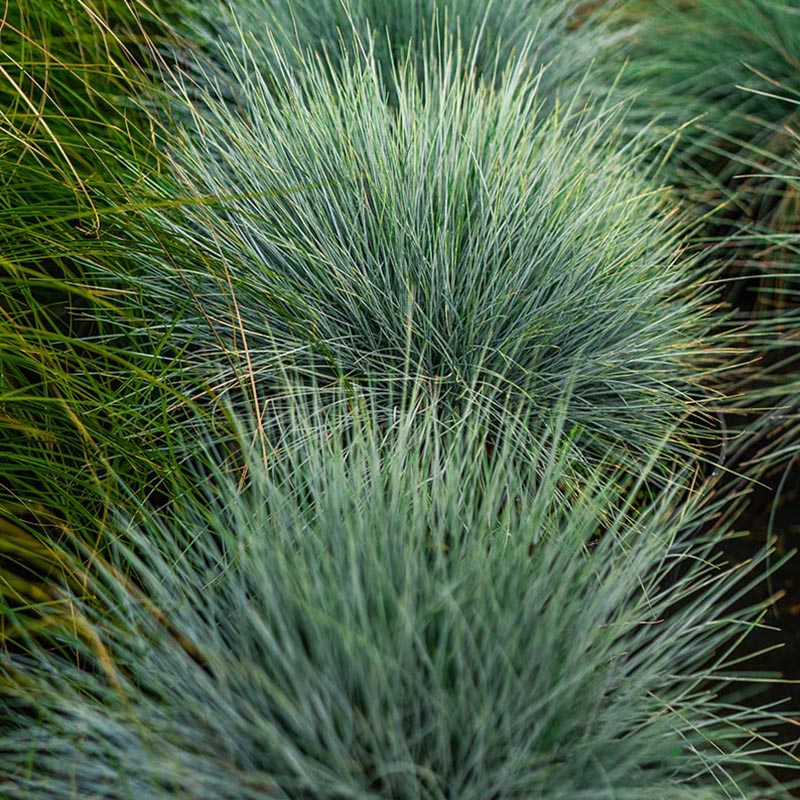
⑬
Festuca glauca
An evergreen, dwarf grass with upright, dense tussocks of stiff, blue, needle-like foliage and blue flowerheads in summer that fade to a buff colour. Works well in a container or as part of a gravel garden.
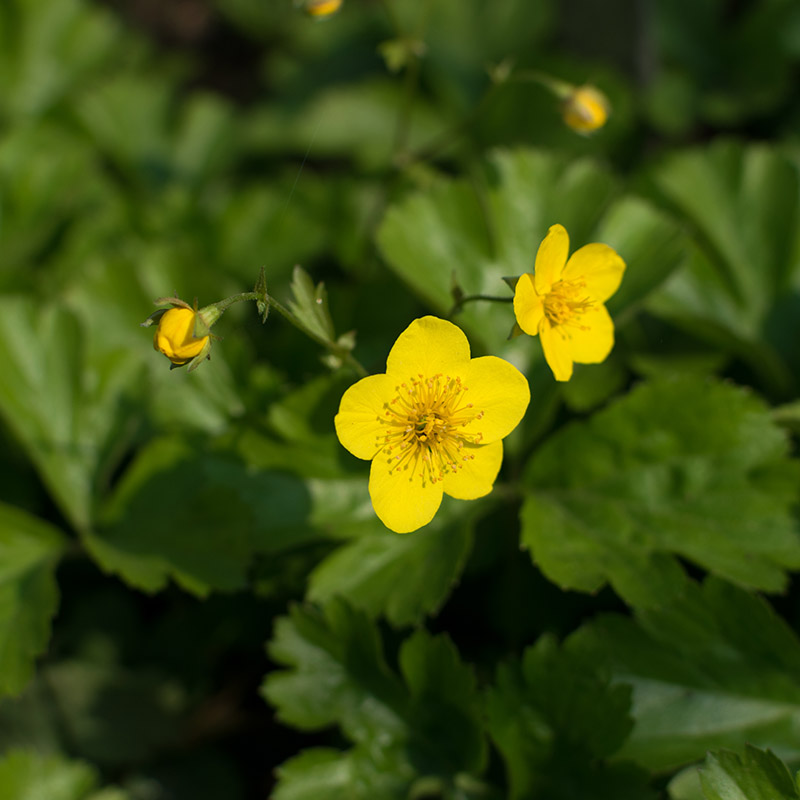
⑬
Waldsteinia ternata
A spreading perennial with lobed, glossy, green foliage and an abundance of bright yellow, saucer-shaped flowers from spring to summer. Ideal for groundcover or underplanting shrubs, in a sheltered position.

